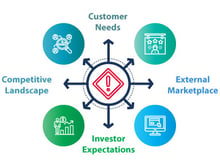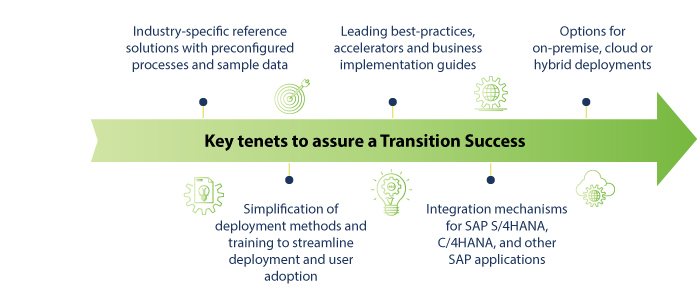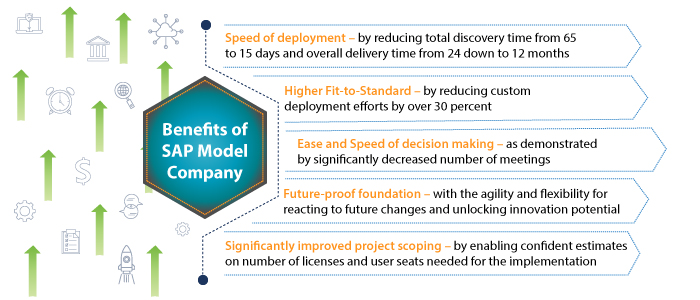
Most companies are continuously dealing with pressures to keep up with changes in their external marketplaces, competitive landscapes, customer needs, and investor expectations. These external issues are also driving internal pressures to improve efficiency, productivity, agility, security and enterprise-wide alignment and integration.These internal and external pressures lead to initiatives that can be grouped under major change programs called: digital transformation, finance innovation, etc., however when it comes to actually implementing such changes, CFOs and CIOs often struggle with the transition from legacy systems to new technologies.
This blog provides a look at alternative approaches and the relative benefits of each.
Fit-to-Purpose vs. Fit-to-Standard
Fit-to-Purpose encompasses the way that most IT and technology change projects have been handled over the years. It essentially consists of customizing the new software so that is conforms as much as possible with the way that things are handled in the existing environment. While intended to avoid disruption to established processes and workflows, the Fit-to-Purpose customization approach often fails to take full advantage of the capabilities in new software.
Since the Fit-to-Purpose implementation is predicated on tailoring the new software into what is already being done, project teams may forego activating features that could be very powerful but don’t easily integrate with current legacy software and processes. Also, in many cases, customization of new software to accommodate even the most minuscule existing requirements can subsequently hamper the business’s on-going ability and agility needed to adapt to future changes.
In contrast, Fit-to-Standard takes a “best practices” approach to creating the new environment and therefore tailors the implementation to take full advantage of all the new features and assures optimal integration with an eye to the future. Instead of letting the transition program be overly influenced by past choices, the Fit-to-Standard methodology aims to leverage the entire spectrum of capabilities in the new technologies being implemented. With Fit-to-Standard, implementations can apply the attitude of “why not” instead of “why” when it comes to following the processes within Fit-to-Standard.
Leveraging the SAP Model Company Roadmap
A powerful facilitator of the Fit-to-Standard philosophy is the SAP Model Company suite of services with preconfigured processes to both accelerate the transition process and optimize the results. By providing pre-packaged, ready-to-use, end-to-end reference solutions for industries or lines of business (LoB) areas, SAP Model Company services are aimed at simplifying and increasing the speed of digital transformation projects.
SAP Model Company brings together the following key tenets to assure a transition success:
- Industry-specific reference solutions with preconfigured processes and sample data
- Leading best-practices, accelerators and business implementation guides
- Integration mechanisms for SAP S/4HANA, C/4HANA, and other SAP applications
- Simplification of deployment methods and training to streamline deployment and user adoption
- Options for on-premise, cloud or hybrid deployments

- Speed of deployment – by reducing total discovery time from 65 to 15 days and overall delivery time from 24 down to 12 months
- Higher Fit-to-Standard – by reducing custom deployment efforts by over 30 percent
- Ease and Speed of decision making – as demonstrated by significantly decreased number of meetings
- Significantly improved project scoping – by enabling confident estimates on number of licenses and user seats needed for the implementation
- Future-proof foundation – with the agility and flexibility for reacting to future changes and unlocking innovation potential

Fit-for-Innovation is intended to make sure that the end result of our Comply, Optimize Transform™ process gives companies not only maximum benefits from their transformation programs but also lays the foundation for agile and adaptable innovation going forward.

